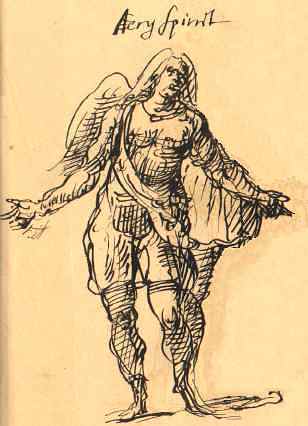From dance to drama
As the use of a theme for court masques became a tradition, the masques became more dramatic. The dancers pretended to be someone, or something else -- nymphs, shepherds, satyrs, gods, goddesses and so on. Soon enough the Renaissance love of symbol, allegory and emblem meant that the theme, and the dance itself, became symbolic, requiring a prologue to make it all clear*. The masque became a symbolic dance, with spoken words to enhance and explain it.
Pastoral themes were popular, and many masques called for nymphs and satyrs to dance*.
Footnotes
-
Bottom commissions a prologue
I have a device to make all well. Write me a prologue, and let the prologue seem to say, we will do no harm with our swords, and that Pyramus is not killed indeed; and for the more better assurance, tell them that I Pyramus am not Pyramus, but Bottom the weaver. This will put them out of fear.
(Bottom in A Midsummer Night's Dream [3. 1. 15-21].) -
A dance for satyrs
This dance, scored for a "broken consort" of recorders and viols is by the same Robert Johnson who wrote the settings of the songs from The Tempest.
